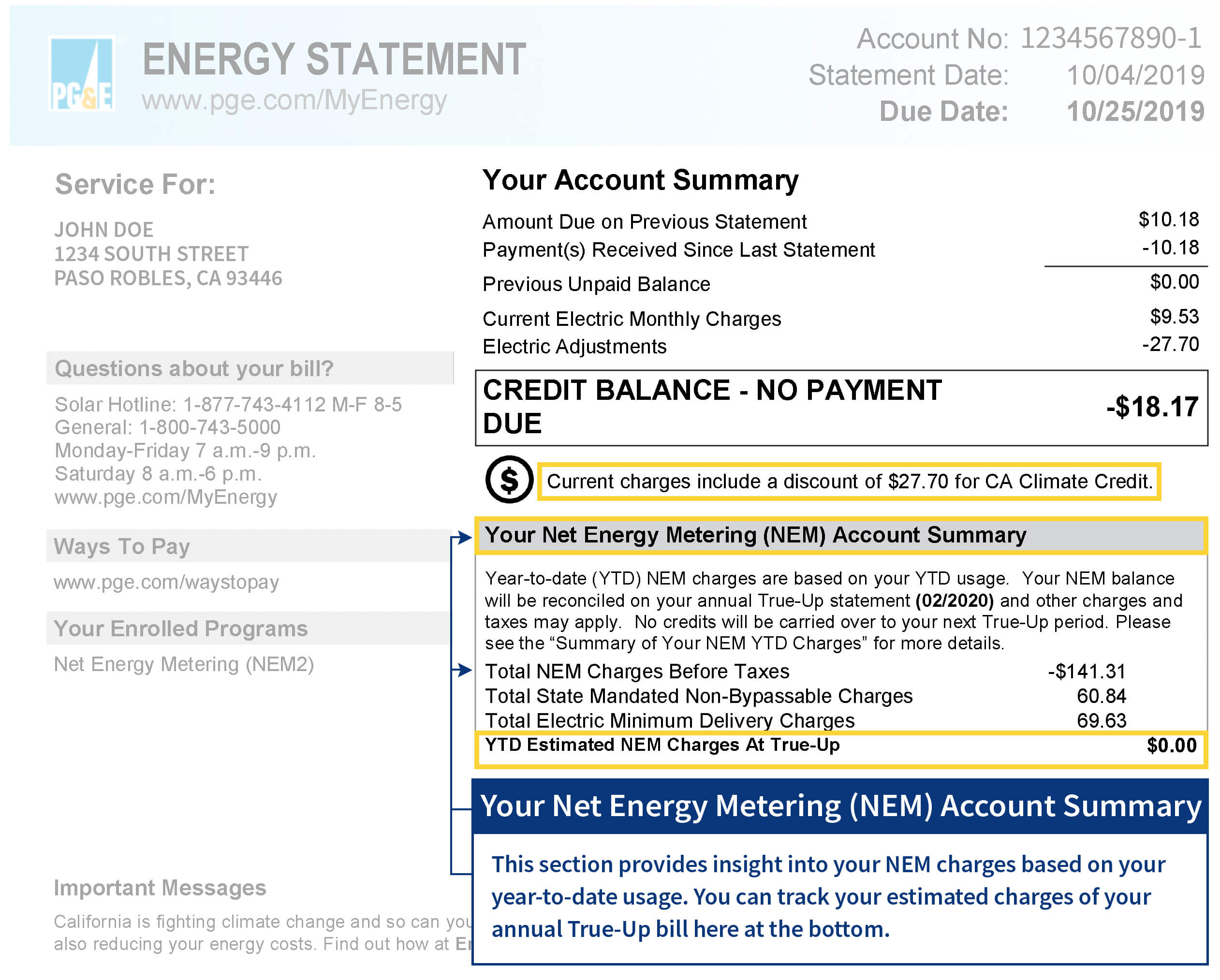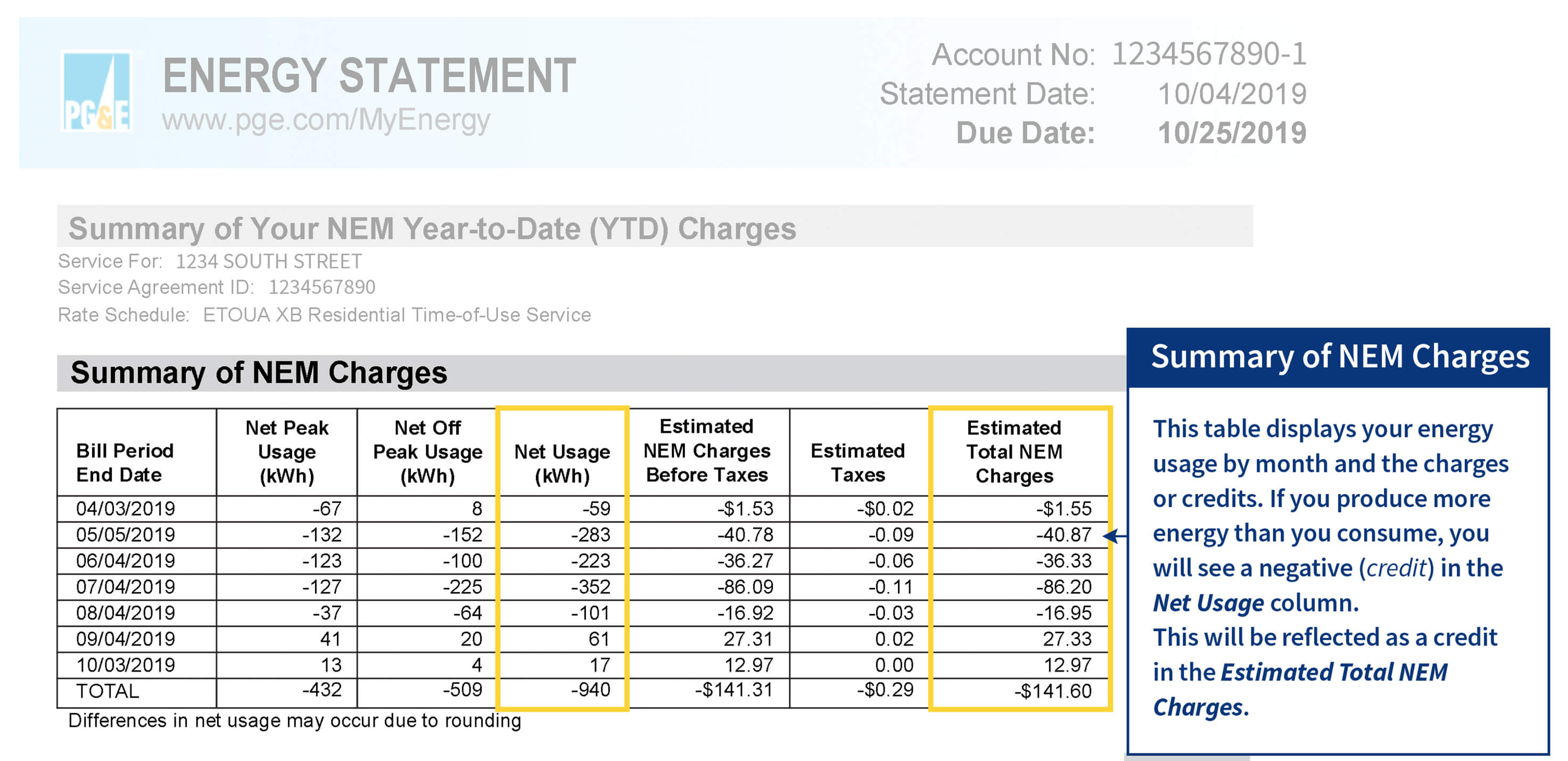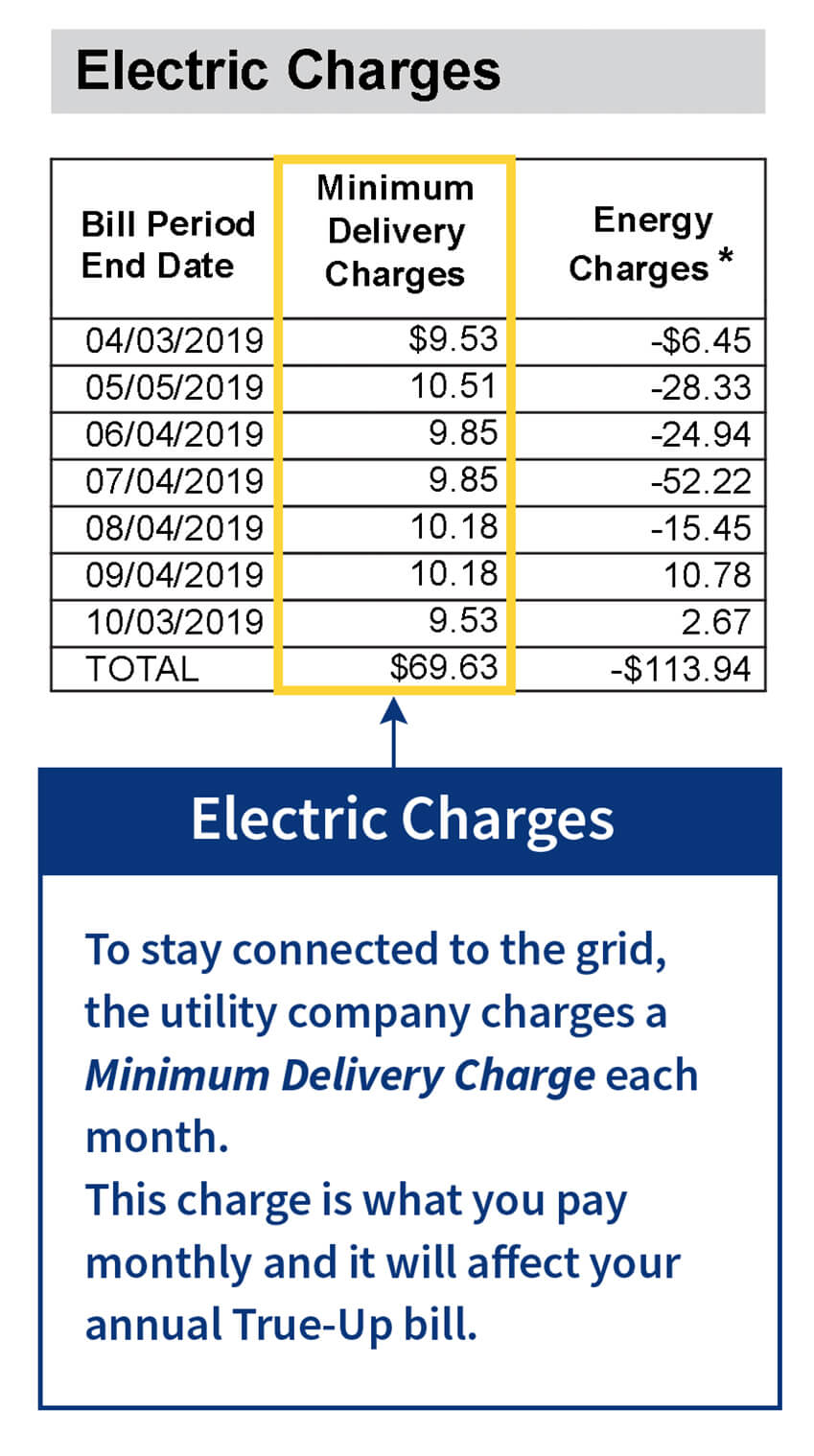When you turn on your solar energy system, you enter into a new agreement with your electric provider. You are now an energy producer, not just an energy consumer, and you will receive monthly Net Metering Statements and an annual True-Up Statement. So what is a Net Metering, and what is a True-Up?
What does the electric company track?
When your solar energy system is generating more power than you use at that moment, you send that extra energy (or “net” energy) to the grid, and the electric company gives you credit for the value of that energy. When you need more energy than your solar system is producing, you draw power from the electric company. The electric company keeps track of how much energy you send them, and how much you draw from them.
Every month PG&E sends you a Net Metering Statement (“NEM”). Your NEM shows you the “net” generation (the excess power your solar system sends to the grid), and the “net” consumption (the total power your home pulls from the grid). You will not be billed for the power you pull from the grid that was not offset by your solar energy until the end of your True-Up period.
So, let’s take a look at your NEM pages and how to read them.
Account Summary – Page 1

On page 1 of your bill, there are a few dollar amounts shown. The Current Electric Monthly Charges, shows the Electric Monthly Charges, which solar does not offset. The bottom amount allows you to track your YTD Estimated NEM Charges at True-Up.
Keep an eye on your YTD Estimated NEM Charges to make sure they are not going to high as you get closer to your annual bill. It is not unusual to see higher estimates during the Winter or heading into the Summer. If your solar energy system is designed for a 100% offset, it should all even out by the time your annual bill arrives.
Summary of NEM Charges – Page 3

The table found on the 3rd page of your NEM bill shows your energy usage by months and if you have charges or credits.
If you produce more energy with your solar than you consume, you will see a – negative (credit) in the Net Usage column. This will be reflected as a credit in the Estimated Total NEM Charges.
If you consume more than your system was designed to produce, you will see a positive (charge) in the Net Usage column.
Electric Charges – Page 3

To stay connected to the grid, the utility company charges a Minimum Delivery Charge each month. This charge is what you pay monthly and it will affect your annual True-Up bill.
No matter how much energy your solar system produces, you cannot offset the minimum delivery charges, so expect to pay this amount at the end of your yearly billing cycle.
Explanation of Calculations – Page 3

This portion summarizes the NEM energy charges. At the bottom, you can see a snapshot of your total NEM charges year to date. If this is a positive number, you might owe this at your annual True-Up.
The Total Electric Minimum Delivery Charges will be deducted from your True-Up IF you owe a balance.

